Atomic, heavy, aircraft carrier. ATAKR project 1143.7 "Ulyanovsk"
However, in order to do this, it is necessary to see the basis, the starting point from which the design of aircraft carriers began in the post-Soviet Russia.
A bit of history
As is known, in the twilight of the USSR, the domestic industry began to build the nuclear aircraft carrier Ulyanovsk, which was then classified in heavy aircraft-carrying cruisers. Alas, they did not have time to complete it, and the hull of the giant ship was disassembled in Ukraine, which had become “independent”.
But, of course, numerous developments on this ship were preserved: here are the calculations, and sets of drawings, and the results of numerous research work on various components, weapons, assemblies, etc., as well as tactical achievements of the military on the use of this ship, and much more. In addition to what has been preserved in paper and metal, practical experience has been added in operating the first and only domestic navy an aircraft carrier capable of supporting horizontal fighter jets and landing flights. We are, of course, talking about the TAKR of project 1143.5 "Admiral of the Fleet of the Soviet Union Kuznetsov."
About stories the author has already told about the development and operation of the latter in the corresponding series of articles, and it does not make sense to repeat. One has only to recall that the concept of Kuznetsov itself, that is, a non-nuclear TAKR, which has only one springboard without catapults with a limited-size air group, has never been what the fleet was striving for.
As you know, the cycle of creating a new type of weapon begins with an awareness of the tasks that need to be addressed as part of a common strategy, but which cannot be effectively solved by the means at the disposal of the armed forces. Having defined such tasks, the military is able to determine the means for solving them and formulate a tactical and technical mission (TTZ) for such a means. And then there is the work of designers and industry for the design and creation of new weapons. Although, of course, it also happens that the TTZ is unenforceable and, if it is not possible to reach a compromise between the desires of the military and current capabilities, the project can be terminated. Thus, with the right order of creation, the newest armament system must always be, if one can put it that way, the conscious need of the military embodied in metal.
Alas, nothing happened to Kuznetsov. The tactical and technical characteristics and features of this TAKR determined not the needs of the fleet, but the forced compromise between them and the position of the USSR Minister of Defense D.F. Ustinov. The fleet wanted ejection and atomic aircraft carrier ships with a displacement of at least 65-70 thousand tons., And better - more. But df Ustinov, believing in the bright future of the VTOL aircraft, agreed only on a non-nuclear ship on the 45 000 t: with great difficulty he managed to convince him to increase the displacement to at least 55 000 t, and he did not want to hear about the catapults.
As a result, in the form of the 1143.5 TAKR, the fleet received absolutely not what it wanted to receive, and what it felt it needed, but only what the industry could give it within the limits of the all-powerful minister of defense at that time. Thus, "Kuznetsov" could not become, and did not become an adequate response to the tasks faced by aircraft carrying ships of the USSR and the Russian Federation.
Dear readers will certainly remember that the author has repeatedly allowed himself to reproach DF. Ustinov in voluntarism in relation to the issues of aircraft carrying ships of the fleet. Therefore, I consider it my duty to remind also that the services of Dmitry Fedorovich Ustinov to the country are immense in the literal sense of the word: they have not yet invented such a measure ... Becoming on the recommendation of Lavrentiy Pavlovich Beria (and it was not easy to deserve a recommendation) by the USSR People's Commissar of Weapons 9 June 1941, he was one of the organizers of the evacuation of the industrial potential of the USSR to the east. And we can safely say that in the chaos of the first year of the war he and his associates succeeded in literally the impossible. After the war, he served as the Minister of Armaments and put a lot of effort into creating and developing the missile industry of the USSR. His service in the military-industrial complex was marked by many achievements and victories, his merit in the formation of the post-war armed forces of the USSR is enormous. Without a doubt, Dmitry Fedorovich Ustinov was a great man ... but still, just a man who, as is well known, is prone to make mistakes. At the time, S.O. Makarov quite rightly remarked that only he who does nothing is not mistaken, and D.F. Ustinov did extremely much for his country. And the commitment of the VTOL aircraft, in the opinion of the author of this article, was one of the not so numerous mistakes of this in any respect an outstanding statesman.

As it is known, Dmitry Fedorovich died 20 untimely on December 1984. And in the same month Nevsky PKB was entrusted with the design of an atomic TAKR with a large displacement and with an increased air wing. By this time, the future “Kuznetsov” was on the stocks 2 of the year and 4 of the month, and until its launching it was almost 3 of the year, and almost a year remained before the start of work on the 1143.6 TAKR of the same type, which later became the Chinese Liaoning. The TTZ for the atomic TAKR was approved by the Commander-in-Chief of the Navy S.G. Gorshkovym. But the design process was not simple, and the preliminary design was considered only in April 1986. The project was approved by the admiral of the fleet V.N. Chernavin and the Minister of the shipbuilding industry I.S. Belousov, and in July of the same year, the Neva PKB received an order to prepare and approve the technical design for March 1987. At the same time, the Black Sea Shipyard (ČSZ), where our TAKRs were created, was allowed to start work even before the technical project was approved, and to ensure unconditional ship laying in 1988. That was done: the ship’s official launch took place on November 25, 1988.
As we can see, the design procedure for atomic TAKR in the USSR turned out to be very slow, and, despite all the accumulated knowledge, the experience of developing and building non-nuclear TAKR 1143.1-1143.5 projects and many early studies of atomic ejection aircraft carriers, the Ulyanovsk ATAKR tab took place later 4 of the year after the start of work on this ship. It is necessary to take into account, of course, that the CSY for the bookmark Ulyanovsk had to be seriously modernized: the building berths were reconstructed, a new outbuilding embankment and a number of additional productions were built, which cost about 180 million rubles. at the rate of 1991, the CSZ received modern laser and plasma technology, installed the newest Japanese machines for processing large-sized metal sheets, as well as the Swedish assembled welding line ESAB. The plant has mastered a number of new productions, including non-flammable plastics and on-board aircraft lifters, but most importantly, it was able to carry out large-block construction. “Ulyanovsk” was “broken” into 29 blocks, each of which had a mass up to 1 700 t (the trigger weight of the TAKR-a was about 32 000 t), and the installation of finished blocks was carried out using two Swedish 900-ton cranes, each which had its own weight without load 3 500 t and span width 140 m.
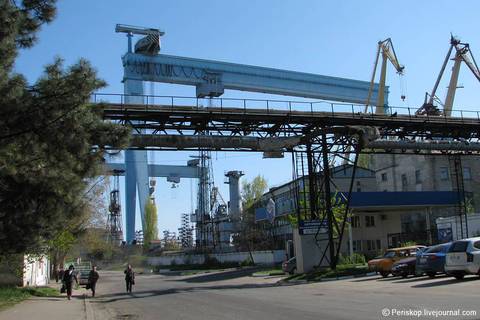
In other words, CSY turned into a first-class factory for the construction of large-tonnage warships, and even the newest, "block" method.
What was Ulyanovsk built for?
The main objectives for ATAKR, according to the design task were:
1. Giving combat stability to formations of surface ships, strategic missile submarines, marine missile-carrying aviation in combat areas.
2. Reflection of enemy carrier strikes and the conquest of superiority in the air.
3. Destruction of enemy ships and submarines.
In addition, the auxiliary tasks of the ATAKR were listed:
1. Ensuring the landing of amphibious assault forces.
2. The overlap of enemy missile volleys with EW aircraft.
3. Providing long-range radar detection and targeting for heterogeneous fleet forces.
ATAKR and strike carrier - conceptual differences
As a matter of fact, already from the above-mentioned tasks, the difference in the approach to the construction of aircraft carriers in the USA and the USSR is obvious. America created shock (in the full sense of the word!) Aircraft carriers, whose main task was to strike at the shore, including nuclear weapons. Of course, the US attack aircraft carriers also had to deal with the destruction of the enemy navy, including its surface, submarine and air components, but this task, in essence, was considered only as a necessary stage in order to proceed to "work" on coastal targets. Thus, the Americans still saw the “fleet against the coast” as the main form of naval warfare.
At the same time, the Soviet ATAKR was initially created for completely different tasks. In essence, Ulyanovsk can be viewed as an air defense / anti-aircraft carrier, but first and foremost, an air defense. The Americans believed that deck aviation would rule the sea war, and saw in it the main means of destroying the enemy’s air, surface and submarine forces. In the USSR, the main basis of the fleet (not counting SSBNs) was surface and submarine ships equipped with long-range anti-ship missiles and naval land-based ground-based aviation, which at that time consisted of Tu-16 and Tu-22 missile carriers of various modifications, including the most advanced Tu-22X3. Thus, in the US concept, the aircraft carrier had a key role in the naval war, but in the USSR, ATAKR had to perform, in essence, providing the function of covering from the air the grouping of heterogeneous forces, which was to defeat the main forces of the enemy’s fleet, and thereby decide the outcome of the war on the sea. To this thesis, we will return, but for now let's consider the design of the Soviet ship.
What happened with our designers and shipbuilders?
"Ulyanovsk" became the largest warship built in the USSR. Its standard displacement was 65 800 t., Full - 74 900 t, the largest - 79 000 t. The data are given at the time of approval by the Central Committee of the CPSU and the USSR Council of Ministers of the design TTE of the ship, 28 October October 1987, they could slightly change. The maximum length of the ship was 321,2 m, KVL - 274 m, maximum width - 83,9 m, KVL - 40 m. Draft reached 10,6 m.
The power plant was four-shaft, it provided for the installation of four reactors and was, in fact, a modernized power plant of heavy nuclear-powered Kirov-type missile cruisers. The full speed was 29,5 knots, economic - 18 knots, but there were also auxiliary, reserve boilers operating on non-nuclear fuel, the power of which was sufficient to ensure speed in 10 knots.
Constructive protection
The ship received very serious constructive protection, both surface and underwater. As far as you can tell from the sources, the basis of the surface protection was the spaced armor covering the hangar and cellars with weapons and jet fuel: that is, first went the screen designed to make the fuse work, and in 3,5 meters behind it the main layer of armor. For the first time such a reservation was applied to the TAKR "Baku", and there its weight was 1 700 t.
As for PTZ, its width reached 5 m in the “thickest” places. I must say that the design of this protection during the design of the ship became the object of many disputes, and it’s not a fact that the optimal solution was chosen according to the results of the “departmental squabbles”. In any case, one thing is known - the anti-torpedo protection was calculated on resisting the destruction of ammunition equivalent to 400 kg of TNT, and this is one and a half times less than on American nuclear aircraft carriers of the Nimitz type, whose PTZ was supposed to protect against 600 kg of TNT.
Active protection
It is often stated that the Soviet TAKR, in contrast to foreign aircraft carriers, had a very powerful air defense system. However, this is a false statement: the fact is that, starting with “Baku”, our aircraft carriers did not install air defense systems not that long, but even medium-range, without which it is generally impossible to speak about the developed air defense of the ship. What the Soviet TAKR didn’t take away, however, was the strongest missile defense, oriented, of course, to destroy not anti-ship missiles and anti-ship missiles and other ammunition aimed directly at the ship. And in this issue, "Ulyanovsk" really left behind any aircraft carrier of the world.
Its air defense system was based on the short-range Dagger air defense missile system, whose missiles could hit air targets reaching speeds up to 700 m / s (that is, 2 520 km / h) at a distance of no more than 12 km and 6 km. It seems to be not so much, but it is quite enough to destroy any anti-ship missile or guided bombs. At the same time, the complex worked fully automatically and had a relatively short reaction time - on the order of 8 seconds on a low-flying target. In practice, this was supposed to mean that by the time the PKR was approaching the maximum range of fire, the air defense system should have had a ready “solution” to defeat it and was in full readiness to use the missile defense system. At the same time, "Ulyanovsk" had 4 radar fire control systems, each of which was able to "direct" 8 firing at 4 missiles at targets in the 60X60 sector, deg. PU
In addition to the “Dagger”, it was planned to install the 8 CENTRIC “Dirk” on Ulyanovsk, whose missiles had reach for the 8 km and altitude range - 3,5 km, and the fast-fire 30-mm guns - 4 and 3 km, respectively. A feature of the project was that the "Daggers" and "Dirks" had to be under the control of a single CICS that controls the state of the targets and distributes the air defense targets between them.
Of course, modern air defense systems do not create an “impenetrable dome” above the ship - in reality, the destruction of airborne targets by means of ships, this is an extremely complex process, due to the short-lived air attack, low visibility and relatively high speed, even subsonic missiles. So, for example, the British C-Wolfe air defense system, created under the tasks similar to the Dagger, knocked 114-mm projectiles without problems at the exercises, but in practice, during the Falklands conflict, showed approximately 40% efficiency in significantly larger and well-observed For targets like skyhawk subsonic attack aircraft. But there is no doubt that the capabilities of the “Daggers” and “Dirks” of the “Ulyanovsk” are an order of magnitude superior to the 3 SAM Systems “Sea Sparrow” and 3 20-mm “Vulcan-Falans” installed on the Nimitz aircraft carrier.
In addition to anti-aircraft weapons, Ulyanovsk was also equipped with the Udav anti-torpedo complex, which was an 10-tube jet bomb equipped with special anti-torpedo ammunition of various types, and a separate high-frequency HAS was used to detect targets. According to the creators, the attacking torpedo must first encounter traps and deviate from them, and if this did not happen, enter the improvised curtain-minefield created by the BoA on the torpedo's movement path. It was assumed that the upgraded version of the Udav-1M is capable of disrupting the attack of a direct-looking uncontrolled torpedo with a probability of 0,9, and a controlled one with a probability of 0,76. It is possible, and even very likely, that in combat conditions, the real effectiveness of the complex would be much lower, but, in any case, the presence of active anti-torpedo protection, even if imperfect, is noticeably better than its absence.
Means of EW
On the "Ulyanovsk" was planned to put a system of interference and electronic warfare "Sozvezdie-BR". It was the newest system adopted by 1987, and special attention during its creation and adaptation to the Ulyanovsk was paid to integration into a single circuit along with other systems to protect the ship from an air attack. Unfortunately, the author doesn’t know the exact constellation of the Constellation-BR, but it had to automatically detect the ship’s irradiation, classify it and independently select the necessary equipment and modes to counter the threat. In addition, great attention was paid to the compatibility of various radio equipment of the ship: the fleet had already encountered a problem when there were many radars installed on one ship, communications equipment, and so on. simply interfered with each other’s work and could not function simultaneously. This lack of "Ulyanovsk" should not have been.
Means of control of the situation
As part of the radar, it was originally intended to equip Ulyanovsk with a Mars-Passat system with a phased radar, but given that it was dismantled at the Varyag TARK, most likely the same thing would happen in Ulyanovsk. In this case, the ATAKR with high probability would receive a new at that time radar complex Forum 2, which was based on the 2 radar Podberezovik. These radars worked quite effectively at a distance of up to 500 km, and, unlike the Mars-Passat, they did not require a specialized radar for detecting low-flying targets “Podkat”.
As for the underwater situation, it was planned to equip Ulyanovsk with the Zvezda SJC, but judging from the photographs of the hull in the building, it is possible that the “good old” Polynom would receive the ATAKR.
Here we will pause in the description of the Ulyanovsk design: the following material will be devoted to the capabilities of its wing, aircraft maintenance, catapults, hangar and strike weapons. For now - we will try to draw some conclusions from the above.
"Ulyanovsk" and "Nimitz" - the similarities and differences
Of all the Soviet warships, the Soviet ATAKR in terms of its displacement turned out to be closest to the American supercarrier Nimitz. However, the different concept of the use of ships obviously affected the equipment and the design features of these ships.
Today, when discussing the utility of aircraft carriers in modern naval combat, two allegations are constantly emerging regarding aircraft carriers. The first is that the aircraft carrier is not self-sufficient and in a war with an enemy more or less corresponding in level, it requires a significant escort, the ships of which have to be detached from their direct tasks. The second is that domestic TAKR do not require an escort, since they can well protect themselves. It must be said that both of these statements are erroneous, but both contain the seeds of truth.
The statement about the need for numerous escorts is true only for attack aircraft carriers of the “American” type, representing, in fact, the best floating aerodrome that can only be obtained in the amount of 100 thousand tons, but only. However, this is fully justified in the framework of the American concept of dominance of carrier-based aviation, which is entrusted with the solution of the main tasks of the "fleet against the fleet" and "fleet against the coast." In other words, Americans are supposed to solve problems with deck aviation: in such concepts, separate groups made up of surface ships and not having an aircraft carrier, can be formed only to solve some secondary tasks. That is, separate compounds of missile cruisers and / or destroyers of the US Navy are not very necessary. Airborne assault groups, submarines, which are necessary first of all for parrying the underwater threat, frigates for convoy service — that is, in fact, all that the American fleet needs. Of course, there are amphibious amphibious compounds, but they operate under tight “guardianship” of the AUG. Thus, the US Navy does not “tear off” destroyers and cruisers to aircraft carrier escorts, they build cruisers and destroyers to ensure the operation of carrier-based aircraft, which also solves the tasks that cruisers and destroyers were assigned to in our fleet.
In this case, of course, numerous escort is an essential attribute of the strike aircraft carrier, if the latter is opposed by a more or less equivalent enemy.
At the same time, domestic TARKRs, including the Ulyanovsk, are representatives of a completely different concept, they are just ships supporting the operation of the main forces of the fleet. The Soviet Navy was not going to build an ocean fleet around deck aircraft, he was going to provide deck aircraft for the actions of his ocean (and not only) fleet. Therefore, if within the framework of the American concept of aircraft carrier ships, destroyers and cruisers supporting aircraft carrier operations fulfill their main task, for which they were actually built, then within the framework of the Soviet concept, ships providing security for TAKR are indeed thereby diverted from their main tasks.
In this case, the American aircraft carrier is designed to solve a larger range of tasks than the Soviet TAKR, or even ATAKR. The latter either had to provide zonal supremacy in the air, or an air defense system of the strike formation, as well as the PLO, while the deck aircraft of the American “super” should also solve impact tasks. In fact, by eliminating the “shock” function (it was purely auxiliary on the Soviet TAKR), our admirals and designers were able to create smaller ships, or better protected ones, or both. Strictly speaking, this is exactly what we see in Ulyanovsk.
Its full displacement by more than 22% was inferior to the “Nimitz”, but the active anti-aircraft weapons were much stronger. On the "Ulyanovsk" there was a system of countering torpedoes (how effective - this is another question, but it was the same!), And the "Nimitz" had nothing of the kind, moreover, the Soviet ship had a very powerful constructive defense. Alas, it is impossible to compare it with the one that Nimitz possessed due to the secrecy of the latter, but still it should be noted that the PTZ of the American ship, apparently, turned out to be better.
As for the installation of a powerful sonar complex, this is a very controversial issue. On the one hand, of course, the equipment of Polynom GAK weighed under 800 tons, which could be used to increase the number of aircraft wing or the quality of its use. But on the other hand, the presence of a powerful SAC at Atakr significantly increased its situational awareness and thereby reduced the number of ships required for its direct escort, and therefore released additional ships to solve combat missions.
In this case, it would be completely wrong to regard the domestic TAKR or ATAKR of the USSR era as a ship capable of conducting combat operations completely independently. Firstly, it is simply not intended for this, because its role is air defense and air defense, but not the independent destruction of the enemy’s surface ship groups, however, this issue will be discussed in more detail only in the next article. And secondly, he still needs an escort - another question is that thanks to a strong (although not having a “long arm”) air defense, a powerful EW, and so on. his escort may be significantly less numerous than that of the American aircraft carrier.
To be continued ...
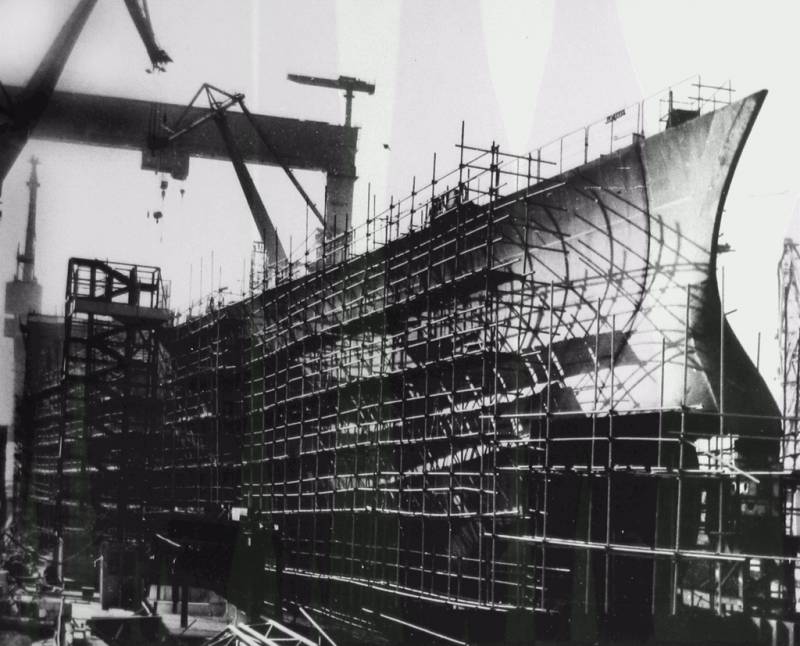
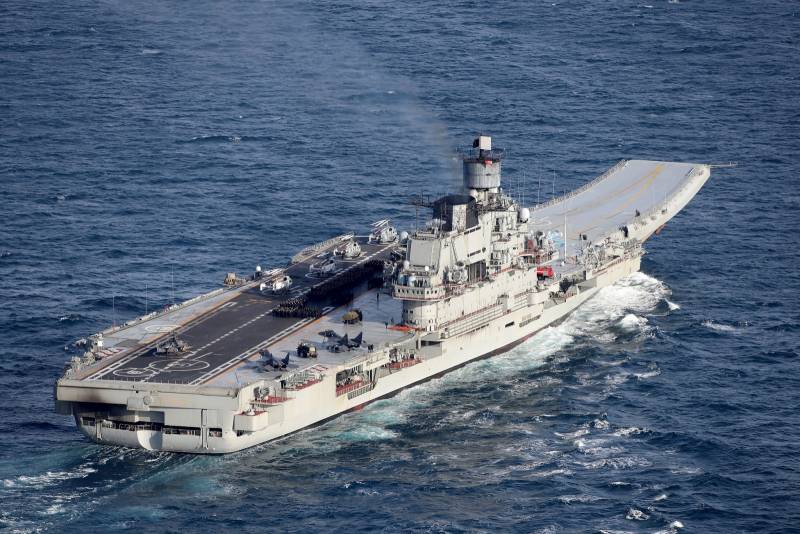
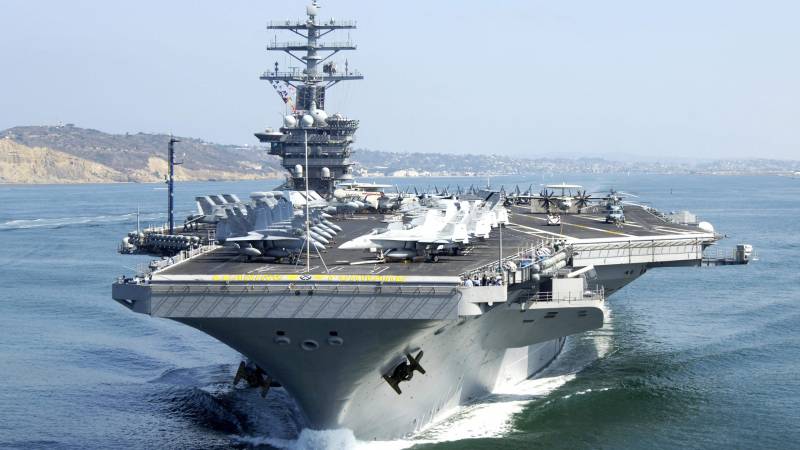
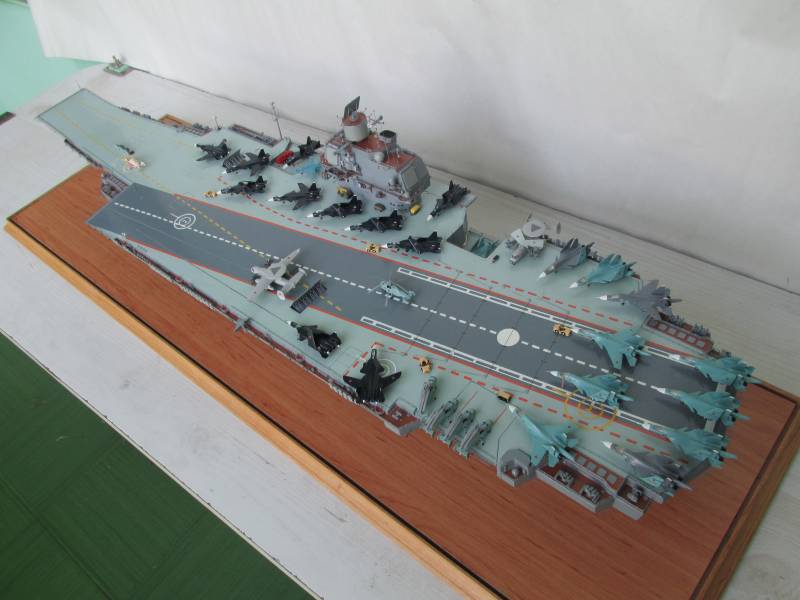
Information